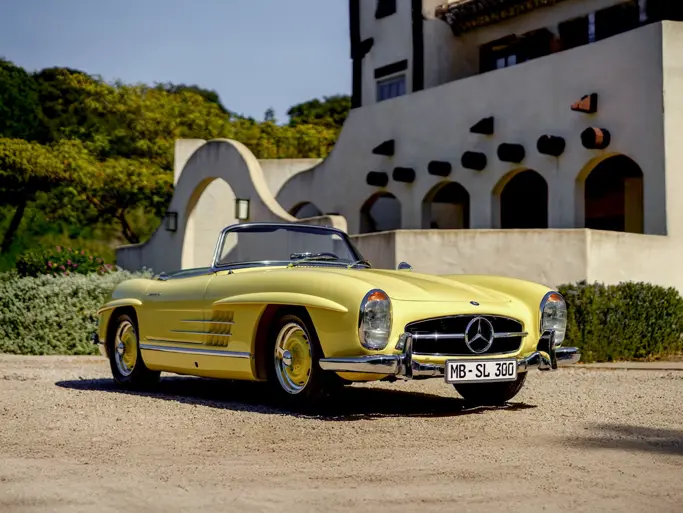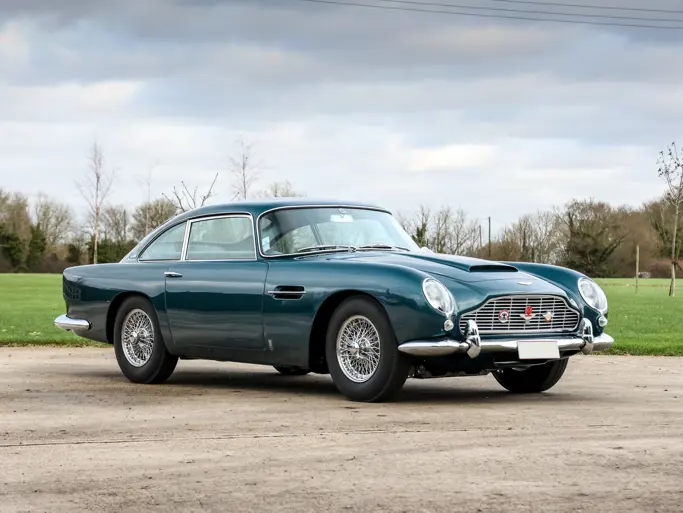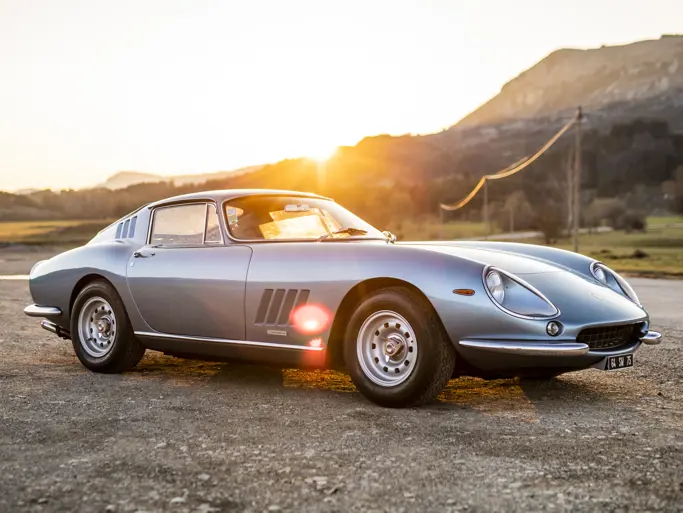The Ford Mustang had an amazingly successful introduction in April 1964, selling 22,000 units on the first day alone. The cars popularity was undeniable and the Mustang would become a fixture in the Ford lineup. A period magazine even forwarded the idea that the “Mustang had to be the single greatest thing to happen to the Ford Motor Company since Henry decided to build the Model T.”
The Shelby Mustang came about because Ford division boss Lee Iacocca wanted the Mustang to have more of a high performance image. He was well aware of the Carroll Shelby managed Ford-powered Cobra sports car team which would capture the 1965 International Sportscar Championship for GT Manufacturers. Shelby was asked to boost the performance of the standard Mustang and was happy to accommodate Iacocca’s request as he applied the desired modifications to the new fastback design.
Standard high performance 271 horsepower Mustangs were delivered to the Shelby American factory near Los Angeles International Airport where they were rebuilt to the GT 350 specifications that are mentioned above. At the time there were, according to Car & Driver magazine, “about a million options for racing the GT 350 in the SCCA’s B Production category, many of which were proved in competition by the Cobra 289 and Ford’s racing GT 40, both of which also use the basic Fairlane V-8. Last year, in their first season of racing, the GT 350’s won several National Championships, including the final playoff in Daytona.”
The street specification Mustang GT 350, introduced for the 1965 model year, sold briskly; however, they were fundamentally thinly-disguised racecars. Some buyers complained about harshness, noise, rattles and unwanted fumes from the exhausts exiting in front of the rear wheels. As a result, the 1966 GT 350 became more user friendly due to a host of mechanical revisions that tempered the edges and made the cars more agreeable. Some changes from the 1965 model included the installation of Plexiglas quarter-windows instead of the previous year’s air vents, functional quarter-panel air-scoops that feed cool air to the rear brakes, an optional SelectShift three-speed automatic transmission, the exhaust was extended back further from the cockpit, NASCAR-style hood pins were added and the Cobra GT 350 logo was affixed to the gas cap. The interior saw the addition of a fold-down rear-seat, deluxe wood-grain steering wheel and Cobra tachometer. All GT 350s featured competition seatbelts. The GT Equipment Group included the high performance V-8 engine, dual exhaust system, foglamps, grille bar, special ornamentation, disc brakes, special handling components package and GT striping.
They found a receptive audience and 1966 sales climbed to a total of 2,380, certainly aided by a large corporate order from the Hertz Rental Car Company. Peyton Cramer, Shelby’s astute marketing man and his general manager at the time, was asked to attempt selling fleet sales. Shelby must have been nearly floored when Cramer returned from a sales pitch to Hertz with an order for 1,000 cars. The Hertz Corporation had decided to jump on the performance bandwagon, certainly a major automotive marketing mantra of the mid-1960s. Hertz, as a brave marketing concept, had previously created The Hertz Sports Car Club, whose purpose was to provide a limited number of high performance rentals to customers “over 25 and qualified to handle such vehicles.” In retrospect any young enthusiast with his, or his dads, credit card was likely “qualified.”
The 1966 model offered here, serial number SFM6S703, is a very desirable machine and is found in the SAAC Shelby Registry. According to their detailed notes, this car is confirmed as being one of the original Hertz cars, its color was not documented, but it is commonly believed to have been Raven Black, as it is now seen. The Registry continues that the Shelby had a radio installed by Hi-Performance Motors in El Segundo, California on January 13, 1966 and then shipped to Dick Bohn Ford Co., Inc. in Gretna, Louisiana on January 19, 1966 for dealer prep prior to delivery to Hertz in New Orleans. Hertz was invoiced $3,514 plus $104.56 for chrome Magnum wheels. With the other add-ons and freight, the total came to $3,792.84. It was purchased new by Mr. Erston H. Reisch, Jr. of Louisiana. The car stayed in Louisiana with a few different owners for an unspecified time and then was sold to interests in Texas, Canada and New Jersey before ending up with the current owner. The Registry documents the car as being professionally restored in 2006, and it has received further attention and upgrades in the ensuing years.
Further receipts and documents show that the GT 350H received further service and mechanical work primarily from 2012 and 2013. The owner sent us two PDF files full of this paperwork that are 47- and 38-pages in size. For a complete breakdown of these receipts and the work performed, please contact your attending Auctions America Car Specialist.
Along with being driven by a 289-cid V-8 engine and automatic transmission, the Hertz “rent-a-racer” Shelby GT 350H has Magnum 500 wheels, competition-style seatbelts, dash-mounted tachometer, plus many other standards that helped set the Shelby apart. Among the upgrades is a period-correct Paxton supercharger which will boost the horsepower figure and is a tribute to the 11 similar cars that came from the factory with this formidable package. The Shelby also has Vintage Air air conditioning that “works through the original controls” plus it has Bluetooth audio and auxiliary cable for audio that works through the speaker in the dash. Power steering and brakes are also onboard, as are a larger fuel tank and a larger aluminum radiator.
When considering the mechanical modifications for more effective performance; please keep in mind that all of the modifications are readily reversible, especially since all of the original parts have been retained and are included with the sale.
To convey this machine’s uncommon identity, approximately 800 of the Hertz GT 350s were liveried in Raven Black with gold stripes (such as this car) and came with the chrome Magnum 500 wheels. Approximately 200 others were finished in Candyapple Red, Ivy Green, Sapphire Blue and Wimbledon White. Only the black versions and a few white ones had the Le Mans stripes on the hood. Some of the earlier GT 350H cars (perhaps 85) had four-speed transmissions, but after checking in more than a few rental returns with burned and slipping clutches, some with bits of racing numbers still stuck to the doors, the majority of later cars came equipped with automatic transmissions.
The car was likened in period as being a “brand new, well used racecar” to the rawness of a World War II fighter plane. These are strong machines that require strong arms and mind to properly put through their paces; they are worth every second of effort.

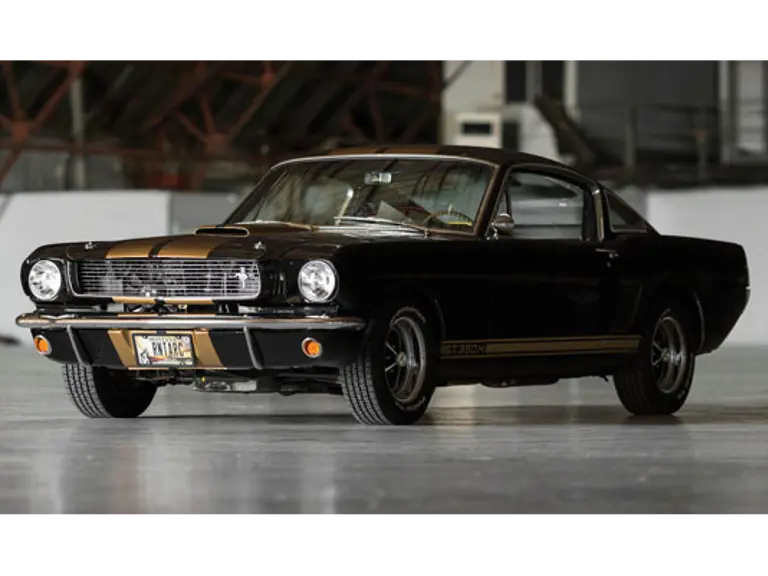
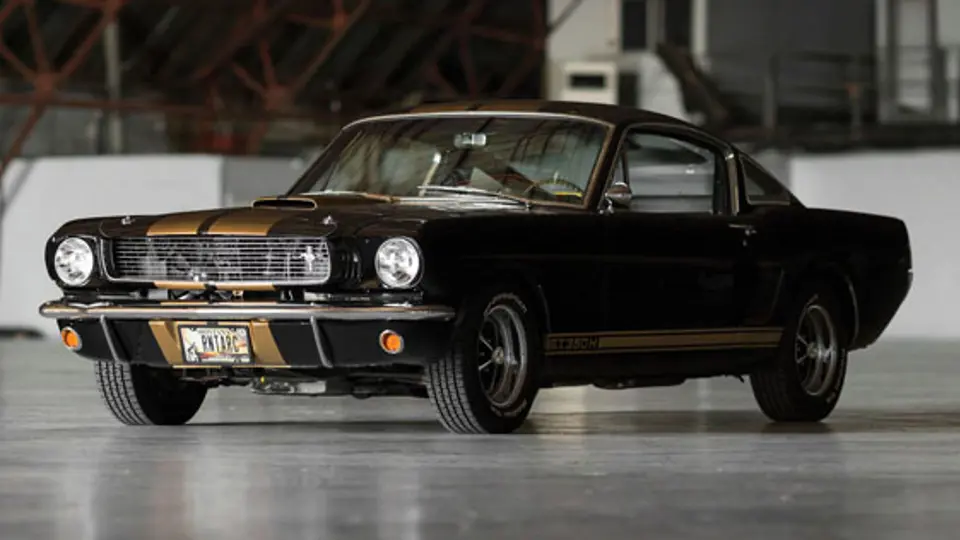
 | Santa Monica, California
| Santa Monica, California
